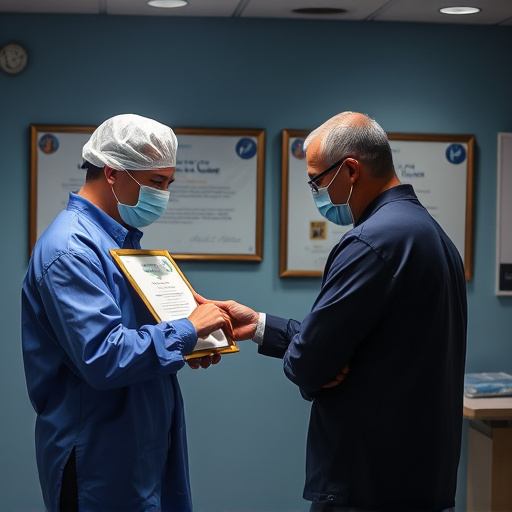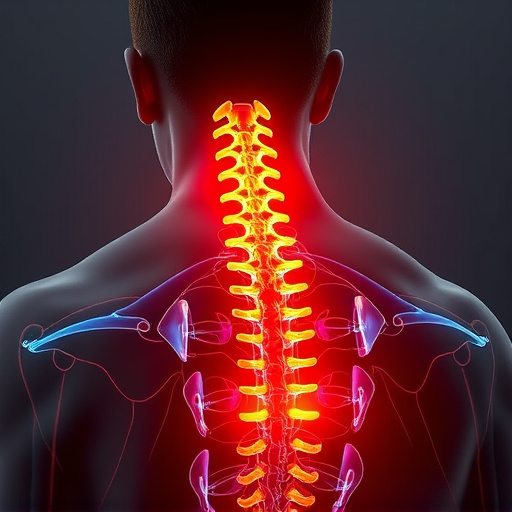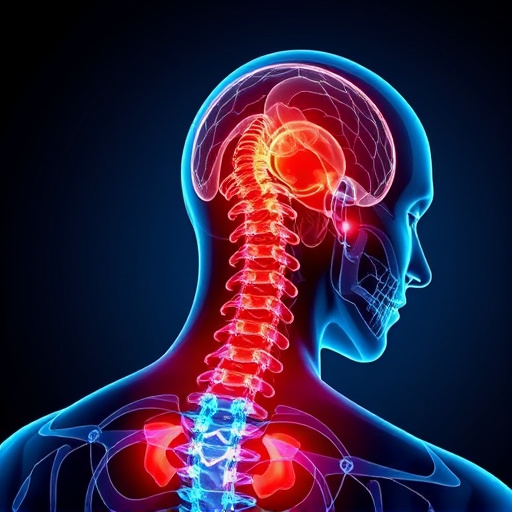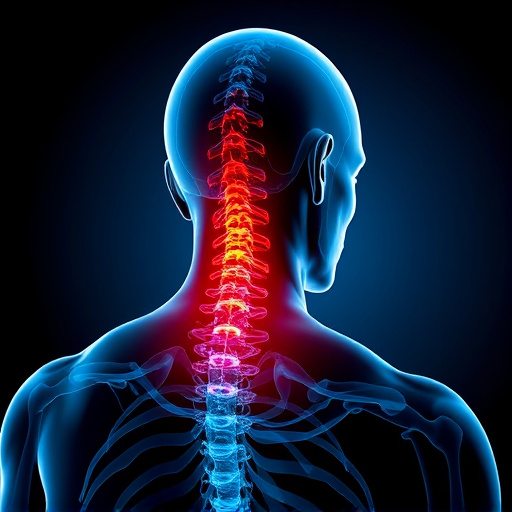Neck and back pain is a common global issue impacting daily life, caused by factors like muscular strain, poor posture, or spinal misalignment. Simple self-care measures often provide effective relief, but severe symptoms require professional assessment for personalized treatment plans. Personalized medicine creates customized care based on symptoms, medical history, and lifestyle, significantly improving quality of life. Effective non-invasive options include physical therapy, chiropractic care, and heat/cold therapy. Lifestyle modifications are crucial for holistic treatment, with regular monitoring key to adapting therapies as needed.
Suffering from persistent neck or back pain? It’s time to say goodbye to one-size-fits-all solutions. This article explores the transformative power of an individualized approach, tailored to address each patient’s unique needs. From understanding the root causes behind your discomfort to exploring effective non-invasive treatments and lifestyle adjustments, discover how personalized care can offer lasting neck and back pain relief.
- Understanding Neck and Back Pain: Causes and Common Symptoms
- The Benefits of Personalized Treatment Plans
- Evaluating Patient History and Conducting Comprehensive Exams
- Tailored Non-Invasive Treatment Options for Neck and Back Pain
- Role of Physical Therapy and Lifestyle Modifications
- Monitoring Progress and Adjusting the Treatment Strategy
Understanding Neck and Back Pain: Causes and Common Symptoms

Neck and back pain is a common issue that affects millions worldwide, impacting daily life and overall well-being. Understanding the causes and symptoms is a crucial step in finding effective neck and back pain relief. Various factors can contribute to this discomfort, including muscular strain, poor posture, spinal misalignment, or underlying medical conditions.
Common symptoms may present as sharp or dull ache, stiffness, numbness, or tingling sensations radiating down the arms or legs. In many cases, simple measures like rest, application of heat/cold therapy, over-the-counter pain relievers, and gentle exercises can provide significant neck and back pain relief. However, persistent or severe symptoms may indicate a more serious condition, necessitating professional evaluation and tailored treatment plans to address each patient’s unique needs.
The Benefits of Personalized Treatment Plans

In today’s medical landscape, a shift towards personalized care is revolutionizing patient outcomes, especially for those seeking relief from persistent neck and back pain. Traditional treatment approaches often apply a one-size-fits-all strategy, which may not address the unique underlying causes and complexities of individual patients’ conditions. However, tailored treatment plans offer a game-changer in managing such chronic issues.
Personalized medicine ensures that each patient receives a customized care plan aligned with their specific symptoms, medical history, and lifestyle factors. This individualized approach allows healthcare professionals to prescribe targeted interventions, including specific exercises, manual therapies, or lifestyle modifications, all geared towards effectively alleviating neck and back pain. By considering the patient as a whole, this method promotes not just symptom relief but also long-term recovery and improved quality of life.
Evaluating Patient History and Conducting Comprehensive Exams
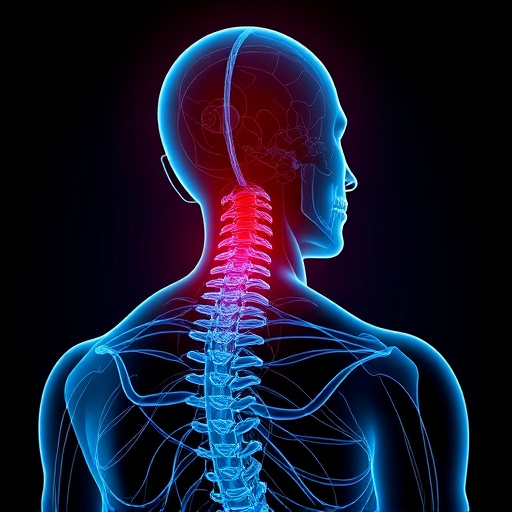
When developing an individualized approach for patients seeking neck and back pain relief, a thorough evaluation of their medical history is paramount. This initial step allows healthcare professionals to gain valuable insights into the patient’s unique circumstances, including any pre-existing conditions, previous treatments, and lifestyle factors that may contribute to their discomfort. By delving into their history, providers can identify potential triggers and underlying causes, which are crucial for tailoring effective treatment plans.
Consequently, conducting comprehensive physical examinations becomes an integral part of this process. These exams enable practitioners to assess the patient’s range of motion, muscle strength, and overall posture. Through careful observation and manual manipulation, healthcare specialists can pinpoint areas of tension, misalignment, or inflammation—key factors in causing neck and back pain. Such meticulous assessments facilitate a more precise diagnosis and guide the prescription of targeted interventions, ensuring personalized care for optimal pain relief.
Tailored Non-Invasive Treatment Options for Neck and Back Pain
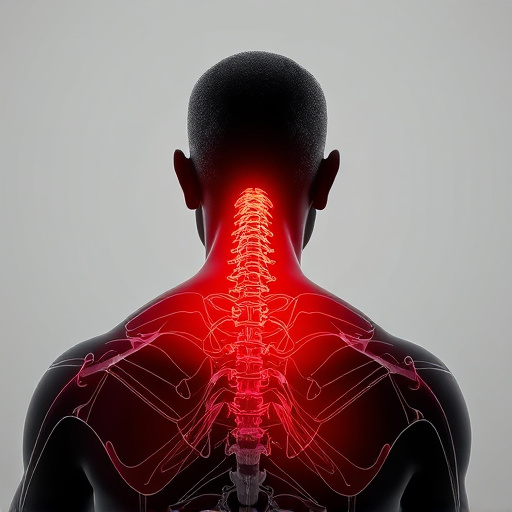
For many individuals suffering from neck and back pain, a one-size-fits-all approach to treatment isn’t effective. That’s where tailored, non-invasive options come into play, offering much-needed relief and a path to recovery. Physical therapy is a prime example of this personalized approach. Trained professionals design customized exercise programs to strengthen muscles supporting the spine, improve flexibility, and reduce pain in both neck and back conditions.
Additionally, advancements in technology have led to innovative non-invasive treatments like chiropractic care, spinal decompression, and targeted heat/cold therapy. These methods are carefully adapted to address specific patient needs, providing targeted pain relief without the need for invasive procedures. Such tailored approaches ensure that each individual receives a comprehensive plan that considers their unique symptoms, lifestyle, and goals, ultimately fostering a more successful journey towards a pain-free life.
Role of Physical Therapy and Lifestyle Modifications
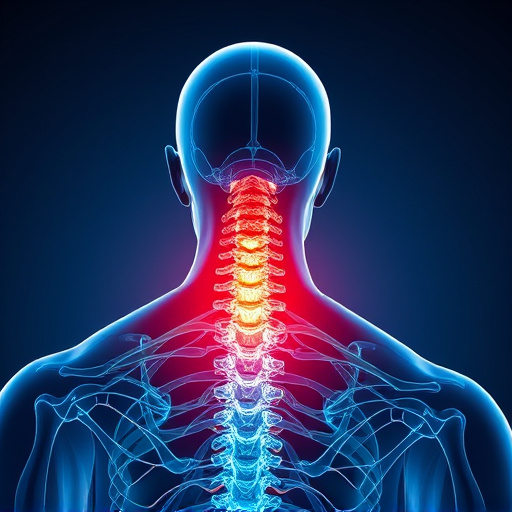
Physical therapy plays a pivotal role in managing and alleviating neck and back pain, offering a personalized approach to suit each patient’s unique needs. Skilled therapists utilize various techniques such as manual therapy, exercise prescription, and education to enhance mobility, reduce discomfort, and improve overall function. By focusing on specific muscle groups and addressing underlying causes, physical therapy provides effective solutions for both acute and chronic pain conditions.
Lifestyle modifications are equally essential components of a holistic treatment plan. Patients can significantly contribute to their neck and back pain relief by adopting ergonomic practices at work and home, maintaining good posture, and engaging in regular physical activity. Combining these strategies with professional guidance from therapists ensures a comprehensive approach that not only offers immediate symptom relief but also promotes long-term wellness and injury prevention.
Monitoring Progress and Adjusting the Treatment Strategy
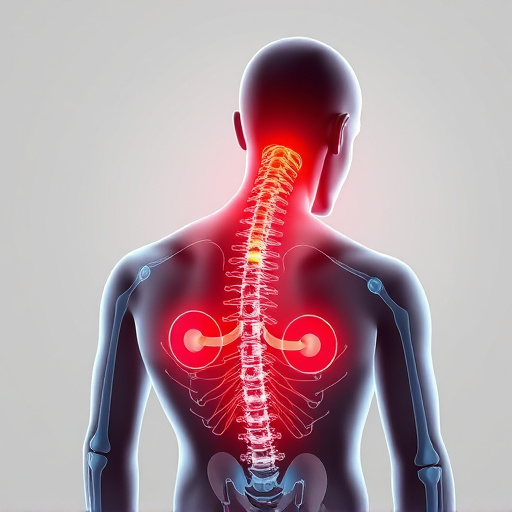
Effective management of neck and back pain relief requires continuous monitoring of a patient’s progress. Healthcare professionals should regularly assess the individual’s symptoms, functional abilities, and overall well-being to gauge the success of the treatment strategy. This involves reviewing key performance indicators, such as pain intensity levels, mobility, and quality of life metrics. By closely observing these factors, practitioners can identify when adjustments are necessary in the care plan.
When progress stagnates or adverse effects emerge, it’s crucial to reevaluate the treatment approach. This may involve modifying the therapy types, intensifying or reducing interventions, or incorporating new modalities. A dynamic and adaptive treatment strategy ensures that each patient receives personalized care tailored to their evolving needs, ultimately enhancing outcomes for neck and back pain relief.
